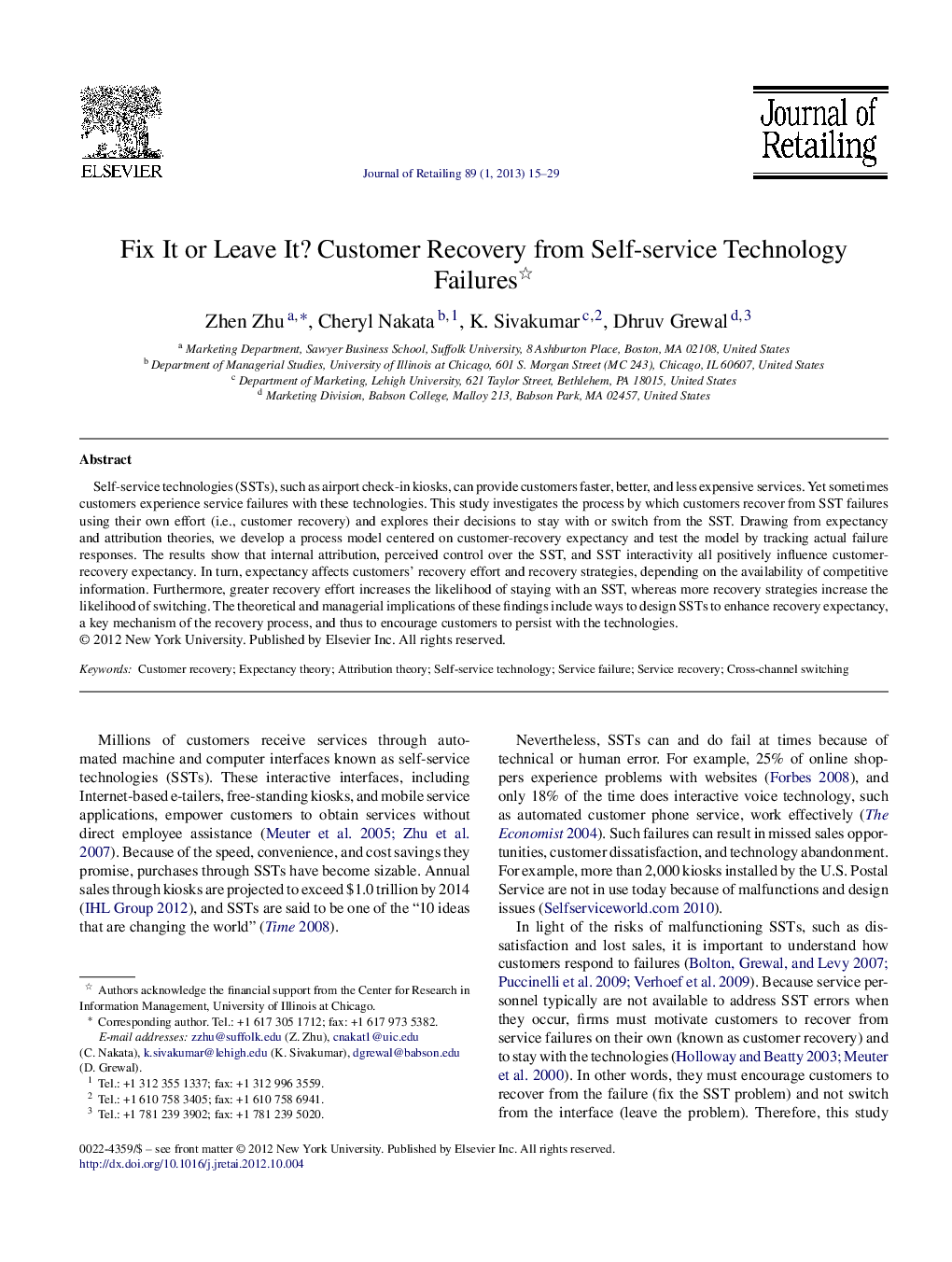| کد مقاله | کد نشریه | سال انتشار | مقاله انگلیسی | نسخه تمام متن |
|---|---|---|---|---|
| 886431 | 913059 | 2013 | 15 صفحه PDF | دانلود رایگان |

Self-service technologies (SSTs), such as airport check-in kiosks, can provide customers faster, better, and less expensive services. Yet sometimes customers experience service failures with these technologies. This study investigates the process by which customers recover from SST failures using their own effort (i.e., customer recovery) and explores their decisions to stay with or switch from the SST. Drawing from expectancy and attribution theories, we develop a process model centered on customer-recovery expectancy and test the model by tracking actual failure responses. The results show that internal attribution, perceived control over the SST, and SST interactivity all positively influence customer-recovery expectancy. In turn, expectancy affects customers’ recovery effort and recovery strategies, depending on the availability of competitive information. Furthermore, greater recovery effort increases the likelihood of staying with an SST, whereas more recovery strategies increase the likelihood of switching. The theoretical and managerial implications of these findings include ways to design SSTs to enhance recovery expectancy, a key mechanism of the recovery process, and thus to encourage customers to persist with the technologies.
Figure optionsDownload as PowerPoint slideHighlights
► This study investigates the process by which customers recover from SST failures on their own (i.e., customer recovery).
► Our model is based on expectancy and attribution theories and tested by tracking responses to failures in computer-based experiments.
► Internal attribution, perceived control over SST, and SST interactivity all positively influence customer-recovery expectancy.
► Expectancy affects customers’ recovery effort and recovery strategies, depending on the availability of competitive information.
► Recovery effort increases the likelihood of staying with an SST, whereas recovery strategies increase the likelihood of switching.
Journal: Journal of Retailing - Volume 89, Issue 1, March 2013, Pages 15–29